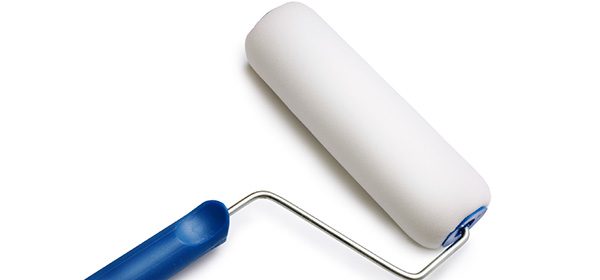
Aug. 13, 2013 | CREBNow
How To: Prep a Room for Painting
In theory, it seems like the most basic of home renovation projects. Able to transform a room from dreary to divine, a fresh coat of paint is a valuable tool in the DIY arsenal. However, there's far more to achieving a new look than just slapping a little Metropolis grey over that outdated perfect peach. While it's unlikely Alexander Graham Bell was referring to painting when he said, "Before anything else, preparation is the key to success.", his wisdom is just as pertinent.
 First off, choosing the proper colour for the room is imperative. Take time to properly weigh your options. Look at colour samples under multiple light conditions/times of day and test out possible paints on the existing wall. Even if you decide against the colour, it will give you motivation to get the job done.
First off, choosing the proper colour for the room is imperative. Take time to properly weigh your options. Look at colour samples under multiple light conditions/times of day and test out possible paints on the existing wall. Even if you decide against the colour, it will give you motivation to get the job done. To calculate the amount of paint you'll need, Sherwin-Williams (Sherwin Williams) offers an online paint calculator. A rough estimate is one gallon for every 400 sq. ft. of wall space.

 To properly prep a room for painting, remove as much as you can from the room, and cover other items with a dropcloth. Walls, along with doors and trim, should be washed thoroughly, and left to dry.
To properly prep a room for painting, remove as much as you can from the room, and cover other items with a dropcloth. Walls, along with doors and trim, should be washed thoroughly, and left to dry. For tools, the most popular sizes for painting interiors are a 10 mm nap roller and two-inch cutting brush. The roller will help ensure a smooth finish, and reduce a pebbly look on the surface. In recent years, the introduction of microfibre rollers have reduced the workload for DIYers, allowing painters to paint more while dipping less.
For tools, the most popular sizes for painting interiors are a 10 mm nap roller and two-inch cutting brush. The roller will help ensure a smooth finish, and reduce a pebbly look on the surface. In recent years, the introduction of microfibre rollers have reduced the workload for DIYers, allowing painters to paint more while dipping less. When taping, make sure the surface is clean, dry and smooth before applying. Always use quality painter's tape, and press along the edges of the tape to establish smooth contact with the surface and prevent bleeding.
When taping, make sure the surface is clean, dry and smooth before applying. Always use quality painter's tape, and press along the edges of the tape to establish smooth contact with the surface and prevent bleeding. When painting over glossy surfaces, they should be lightly sanded or primed to ensure proper paint adhesion. Some stores carry kits to test whether or not the existing paint is oil-based, or you can use methyl hydrate (gas line anti-freeze) or acetone based nail polish remover. Apply a small quantity of one of these products to a pad and rub vigorously on the painted surface. If the surface remains shiny it is oil/alkyd; if the paint is stripped it is latex.
When painting over glossy surfaces, they should be lightly sanded or primed to ensure proper paint adhesion. Some stores carry kits to test whether or not the existing paint is oil-based, or you can use methyl hydrate (gas line anti-freeze) or acetone based nail polish remover. Apply a small quantity of one of these products to a pad and rub vigorously on the painted surface. If the surface remains shiny it is oil/alkyd; if the paint is stripped it is latex. Dents, nicks and sizable cracks should be filled and sanded and doorknobs, coverplates and ceiling fixtures should be removed when possible. Even for small patchwork, primer should be applied to ensure surface uniformity.
Dents, nicks and sizable cracks should be filled and sanded and doorknobs, coverplates and ceiling fixtures should be removed when possible. Even for small patchwork, primer should be applied to ensure surface uniformity.
Tagged: Calgary Real Estate | Calgary Real Estate News | How To | How To




